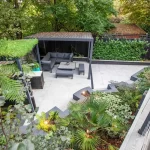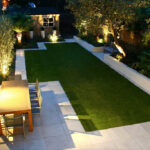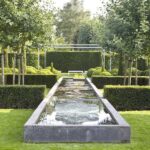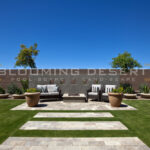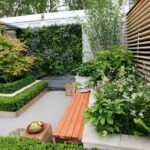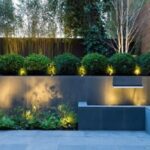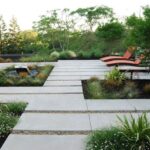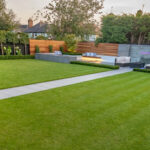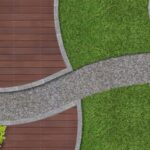Contemporary garden design has become increasingly popular over recent years, as people seek to create outdoor spaces that reflect their modern lifestyle and aesthetic tastes. This style of garden design is characterized by clean lines, minimalism, and the use of bold elements to create a sleek and stylish look.
One of the key features of contemporary garden design is the use of geometric shapes and structures. This can include angular raised beds, pathways, and seating areas, which create a sense of order and organization in the garden. These geometrical elements can be softened and complemented by the use of curved and flowing plants, such as grasses and ornamental shrubs, to create a harmonious balance between structure and nature.
Another hallmark of contemporary garden design is the use of contrasting materials and textures. This can include the combination of smooth, polished surfaces, such as concrete or metal, with natural materials like wood and stone to create interest and depth in the design. The use of contrasting colors, such as black, white, and gray, can also add a modern and sophisticated touch to the garden.
In terms of planting design, contemporary gardens often feature a limited color palette and a focus on architectural plants with strong, sculptural forms. Grasses, succulents, and ornamental grasses can be used to add texture and movement to the garden, while bold, structural plants like agaves, yuccas, and bamboos can create a striking focal point.
To complement the sleek and minimalist design of contemporary gardens, lighting is an important element to consider. The use of well-placed outdoor lighting can create dramatic effects and highlight key features of the garden, such as sculptural plants or water features. Lighting can also be used to extend the use of the garden into the evening, creating a magical and inviting atmosphere.
Overall, contemporary garden design offers a fresh and modern approach to outdoor living, with its clean lines, bold elements, and harmonious balance between structure and nature. By incorporating geometric shapes, contrasting materials, and limited color palettes, contemporary gardens can create a stylish and sophisticated outdoor space that reflects the owner’s unique lifestyle and aesthetic preferences.


